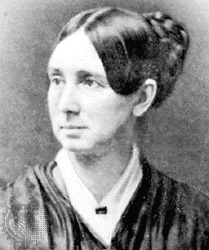The Birth of the Mental Asylum
By Margarita Tartakovsky, M.S.
The first hospital in the U.S. opened its doors in 1753 in Philadelphia. While it treated a variety of patients, six of its first patients suffered from mental illness. In fact, Pennsylvania Hospital would have a pivotal impact on psychiatry.
Benjamin Rush, a physician who has been referred to as “the father of modern psychiatry” largely due to his book, Medical Inquiries and Observations on the Diseases of the Mind, worked at the hospital. He believed in treating mentally ill patients with bloodletting, a treatment that was used by Ancient civilizations. He dismissed demonic theories behind mental illness, and instead thought that psychiatric disorders originated from “hypertension in the brain’s blood vessels” (as cited in Goodwin, 1999).
It was thought that removing blood from the body would help to ease the tension. Patients would indeed typically calm down after a bloodletting, but that was mainly because they were just too weak.
Today, such treatments seem incredibly cruel. But during earlier times, professionals genuinely believed that they were helping patients.
About two decades after the opening of Pennsylvania Hospital, a second hospital opened in Williamsburg, Virginia. This one was exclusively for the mentally ill. Next came a hospital in New York City.
No doubt many readers are familiar with the horrific treatment of patients in mental asylums. However, the first group of institutions was different. Not only did they have good intentions to help individuals with mental illness, they were also smaller and offered individualized care. They followed in the footsteps of Philippe Pinel, a psychiatrist in charge of the first Parisian asylums.
Unlike the prevailing attitudes of the time, Pinel believed that mental illness was curable and he created a program called “moral treatment,” which included improvements in the patients’ living conditions. He even instituted a basic form of behavior modification to encourage order (Goodwin, 1999).
In the early U.S. institutions, superintendents were familiar with all their patients and their backgrounds and would have a treatment plan for them. Moral therapy included everything from exercise and religion training to lessons on good hygiene and activities that were tailored to each person’s interests, such as writing or music.
As stated above, asylums also used medical treatments like bloodletting, cold baths and morphine.
The problems for asylums sprouted with the growing population. As the general population increased so did the number of mentally ill, which prompted the need for big, state-funded facilities.
Asylums changed from treating patients to just housing them. Administering moral treatment wasn’t feasible anymore, considering that asylums went from having a couple hundred patients to thousands. According to Benjamin and Baker (2004), in the 1820s, on average, 57 patients were admitted to each asylum. In the 1870s, that number rose to 473!
Also, fewer and fewer people were released from the asylums. Chronic cases were common.
Institutions became filthy and had deplorable conditions. Patients were regularly abused and neglected. In 1841, Dorothea Dix, who was a pivotal figure in mental health reform, began touring hospitals and other institutions where poor individuals with mental illness were housed.
Dorothea Lynde Dix (1802 - 1887)

She was appalled by the devastating conditions (people were put in closets, chained to the walls; they were poorly fed and beaten). She wrote about these deplorable conditions in great detail.
When she brought her case to the Massachusetts legislature, it provoked a range of reforms. For instance, the state approved an increase in funds to the Worcester asylum.
Dix would travel to almost all the states, and her writings led to reforms and improvements in the living conditions of poor people with mental illness.

Now keeping in mind what we learned from Dix, it makes us wonder what the asylums did with their dead. As we all know, prisons and some mental hospitals had their own grave yards. Here we'll see a bit more detailed information about asylums and their use of the dead.
These particular asylums are in the UK. Some of the same practices were also done in the United States.
This is a few examples of where the dead were "laid to rest".
Death and the dead-house in Victorian asylums: necroscopy versus mourning at the Royal Edinburgh Asylum, c. 1832–1901
https://www.ncbi.nlm.nih.gov/pmc/articles/PMC4112573/
This article examines the management and meaning of post-mortem examinations, and the spatial ordering of patients’ death, dissection and burial at the Victorian asylum, referencing a range of institutional contexts and exploiting a case study of the Royal Edinburgh Asylum. The routinizing of dissection and the development of the dead-house from a more marginal asylum sector to a lynch pin of laboratory medicine is stressed. External and internal pressure to modernize pathological research facilities is assessed alongside governmental, public and professional critiques of variable necroscopy practices. This is contextualized against wider issues and attitudes surrounding consent and funereal rituals. Onus is placed on tendencies in anatomizing insanity towards the conversion of deceased lunatics – pauper lunatics especially – into mere pathological specimens. On the other hand, significant but compromised resistance on the part of a minority of practitioners, relatives and the wider public is also identified.
Burial spaces
Designed to accommodate a multiplicity of patients’ perceived needs through to their discharges or deaths, it was entirely consistent that Victorian asylums usually had their own mortuaries and that some eventually developed their own burial grounds. REA’s patient magazine, the Morningside Mirror, occasionally offered gruesomely wry reflection on the economic utilitarianism informing contemporary charitable provision, where medical care, bodily intrusions and institutional burial might be presented as ultimate bargain services: ‘You may be clothed, physicked, fed, lodged, or buried – your teeth and eyes plucked out … at a charge infinitismally [sic] small, compared with the benefit to be derived’ (LHSA MM, 1851d: 5).
As with the majority of asylums (see Philo, in this issue), REA never developed its own burial ground, instead using a range of parish churchyards in the city. Despite less than half the resting places of deceased patients having been identified, Table 1 presents revealing preliminary data outlining some key burial patterns during 1841–1900. Located in the city’s south-west, the asylum was obliged to use cemeteries at some distance. Significant numbers of its deceased were buried during the 1830s–40s in St Cuthbert’s churchyard, in Edinburgh’s west end. Subsequently, the asylum began using some of the five new cemeteries established during 1843–46 on the city’s outskirts, as a result of the filling up of Edinburgh’s older churchyards. With burial at St Cuthbert’s declining, from the 1850s–90s the asylum was regularly served by the city’s largest new burial site, the 10-acre Southern (Grange) Cemetery on Edinburgh’s southside, as well as the Newington Necropolis, to the north-east. The nearest graveyards before 1878 appear to have been the Grange (north-east of the asylum) and Dalry Cemetery (north-west), both within a mile’s reach.2 The relatively regular use and proximity of the former cemetery may have inspired at least one mid-century REA-based literary skit on mortality. Scurrilously proposing the incarceration of various Lord Provosts for electoral extravagancies in an 1852 Mirror issue, the prolific literati patient John Carfrae highlighted the etiquette demanded in this graveyard’s vicinity, concurrently parodying asylumdom’s privileges and constraints: ‘You will be allowed, Gentlemen, to blow your trumpets in Morningside, under restrictions rendered necessary by a graveyard being in the immediate vicinity, the quiet of whose occupants you cannot be permitted to disturb’ (LHSA MM, 1852: 84). The shadow of death loomed closer with the erection of the new Morningside municipal cemetery in 1878 directly abutting the asylum to the south and constructed on a similar scale to REA’s huge (primarily) pauper west house plot. From the early 1880s through to the 1900s Morningside Cemetery received the bulk of patient burials. In addition, during the 1880s–1900s the North Merchiston (or New Dalry) Cemetery (opened 1881) interred significant numbers of patient remains.
The article sited above is lengthy. It goes into precise detail about each asylum. The take away from this is where exactly did they tell families, if any, what they did with their loved ones. Would it make you wonder if you were lied to about that?
Page created by Xaes
RECENT JOURNAL POSTS
Premiere Sire (126)

Premiere Sire (122)

Sire (102)
REAL VAMPIRES LOVE VAMPIRE RAVE
Vampire Rave is a member of
Page generated in 0.0472 seconds.







